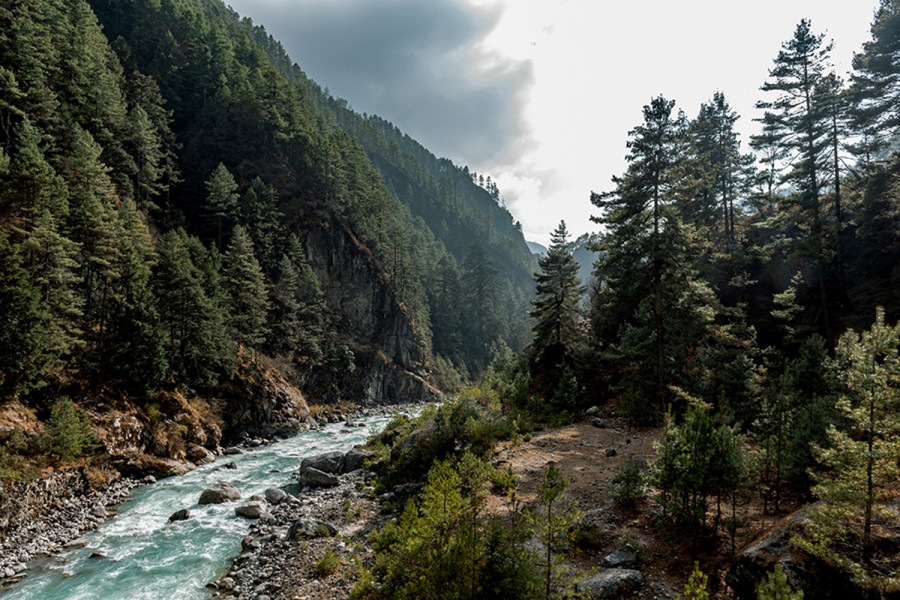Editorial
An unwise decision to plant pine tress is parching the land
The Nepal-Australia Forestry Project did achieve its objective of increasing Nepal’s green cover, but jeopardised the people's livelihood.
In the 1980s, the Nepal government started a nationwide tree plantation drive after deforestation in the country became rampant. In fact, by the 1970s, as reported in this paper, Nepal’s forest coverage was decreasing by at least 1.7 percent annually. To address this problem, the government started a countrywide afforestation drive wherein it chose pine as the species to plant in the mid-hills. But little did the government know about its consequences. Now, many years later, the decision taken without much thought has reared its ugly head with many villages that have pine trees in abundance reeling under water shortages. This case serves as a classic example of how bureaucrats take decisions without doing proper homework on their own.
The choice of conifers to make Nepal look green stemmed from many years of joint collaboration between the governments of Nepal and Australia. The Nepal-Australia Forestry Project was an aid project administered by the Department of Forestry at Australian National University concerned with community forestry development in Nepal’s Chautara region. The project did achieve its objective of increasing Nepal’s green cover, but jeopardised the people's livelihood.
It has been reported that an average pine tree consumes an average of 13.5 litres of water daily. Bigger pines drain up to 80 litres per day. Gosaikunda Community Forest, a pine forest in Dhulikhel that once had two ponds inside it, is now seeing them dry up. The reason: Pine trees were planted there some 30 years ago, and three decades later, water sources are starting to dry up. What happened in Gosaikunda could be a stand-alone event, but it merits bigger attention for it shows how a single wrong step on the policy front could have devastating consequences on the people.
In Nepal, many important government departments are staffed by people who do not have the requisite skills to discharge their increasingly specialised jobs. Bureaucrats even exhibit explicit obedience and unquestioned loyalty to the authority thereby hampering the spirit of teamwork. This lackadaisical approach to the work they are tasked to do and a passive attitude that takes things presented to them, especially by foreigners, at face value has done the country more harm than good. Trusting development partners is one thing, and doing the homework to see if their plans fit well in the Nepali context or not, another. But regrettably, our bureaucrats have the reputation of taking whatever is given to them without further analysis.
Bureaucrats are the instrumentality of the state. They need to be able to address the challenges the country face and facilitate the changes it needs. This requires, more than anything, a qualified and effective bureaucracy. The Nepali bureaucracy in its current form is seldom equal to the task. Learning from the example of pine trees, the bureaucracy needs to rethink its decisions on various policy fronts and exercise its agency before committing anything with development partners.
***
What do you think?
Dear reader, we’d like to hear from you. We regularly publish letters to the editor on contemporary issues or direct responses to something the Post has recently published. Please send your letters to [email protected] with "Letter to the Editor" in the subject line. Please include your name, location, and a contact address so one of our editors can reach out to you.




 6.12°C Kathmandu
6.12°C Kathmandu














